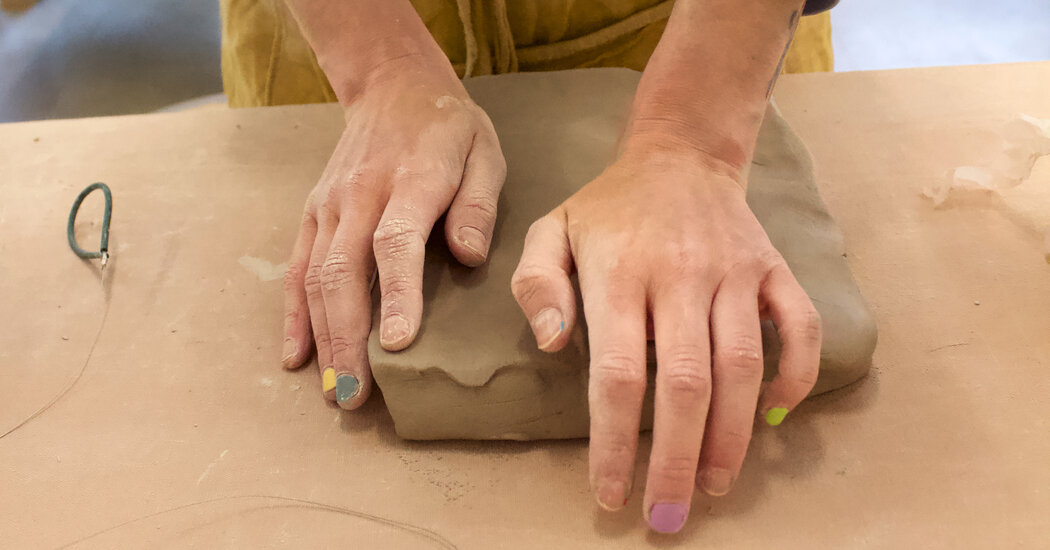The challenge: Make 10 small clay objects in 18 minutes — one minute each for the first five pieces, two minutes for the next four and five for the last one.
Ariela Kuh, a ceramic artist with a bright demeanor and a yellow apron, set a timer on her iPhone as she explained the drill to the 14 of us attending her workshop last month at the Watershed Center for Ceramic Arts in Newcastle, Maine.
“Remember what it was like to touch clay as a kid,” she advised.
As I prepared 10 tangerine-size balls of clay, images from childhood flashed through my mind: the blue shelves at my after-school pottery program, the bulbous terra-cotta vase my mom made at one of the countless cancer facilities in the months before her death, the small elephant at the center of a red ceramic plate that my tiny hands had formed sometime in the mid-1990s and was now collecting dust.
“Go,” Ms. Kuh said, and there was no more time for thinking. Clay shapes appeared and multiplied, each maintaining a vague resemblance to the previous one, like snapshots of sea creatures undergoing evolution, all shells and tentacles. By the time the final phone alarm blared, I was giddy with the uninhibited joy you experience when letting go of perfectionism.
Earth meets water
“Clay is the opposite of the cellphone,” said D. Wayne Higby, an artist and the director of Ceramic Art Museum at Alfred University in Alfred, N.Y. “This stuff is real, takes up space, it’s dirty. There’s just this physicality that is very different from what we experience six or eight hours a day sitting in front of a computer.”
This might partly explain pottery’s recent resurgence in popularity.
Clay educators, artists and industry experts from across the United States told me of people flocking to pottery classes and workshops, studios trying to get a handle on expanding wait lists, and ceramists racking up huge online followings. (There is even a television show for aficionados of the craft: “The Great Pottery Throw Down,” a production à la “The Great British Baking Show,” streaming on Max.)
And maybe because it provides a tactile alternative to the flattened reality of the screen, clay kept drawing in new devotees even as much of the world ground to a halt during Covid lockdowns.
“Pottery wheel sales doubled and tripled during the pandemic,” said Bryan Vansell, the owner and president of the Laguna Clay Company, a leading provider of clays, glazes and equipment for ceramists in the United States….
Click Here to Read the Full Original Article at NYT > Travel…
